 iStorage Server supports iSCSI SAN for Linux operating systems iSCSI, an Internet Protocol (IP)-based storage networking standard for linking data storage facilities. By carrying SCSI commands over IP networks, iSCSI is used to facilitate data transfers over intranets and to manage storage over long distances. iSCSI can be used to transmit data over local area networks (LANs), wide area networks (WANs), or the Internet and can enable location-independent data storage and retrieval. It is a popular Storage Area Network (SAN) protocol, allowing organizations to consolidate storage into data center storage arrays while providing hosts (such as database and web servers) with the illusion of locally-attached disks. Unlike traditional Fibre Channel, which requires special-purpose cabling, iSCSI can be run over long distances using existing network infrastructure. Main benefits of using iSCSI SAN are: - iSCSI can be run over long distances using existing network infrastructure.
- Simplified and consolidated storage management
- Easier virtualization
Linux is one of the most prominent examples of free and open source software collaboration, typically all the underlying source code can be used, freely modified, and redistributed, both commercially and non-commercially, by anyone under licenses such as the GNU General Public License. Typically Linux is packaged in a format known as a Linux distribution for desktop and server use. Combing iStorage Server with Linux will expand the application scope of your Linux server and workstation, thereby enabling WINDOWS server to expand the storage of your Linux computer. It also allows you to directly use the storage devices of the existing Windows server for Linux Server. With IP SAN solution provided by iStorage Server, you may install application and server software, as well as store data required wish you like. If you want to learn more about iStorage Server support for iSCSI under Linux operating system, please refer to this White Paper.
You can download Trial version of iStorage Server here.
 iStorage Server supports creating an iSCSI SAN for Windows Server 2008 clustering iSCSI, an Internet Protocol (IP)-based storage networking standard for linking data storage facilities. By carrying SCSI commands over IP networks, iSCSI is used to facilitate data transfers over intranets and to manage storage over long distances. iSCSI can be used to transmit data over local area networks (LANs), wide area networks (WANs), or the Internet and can enable location-independent data storage and retrieval. It is a popular Storage Area Network (SAN) protocol, allowing organizations to consolidate storage into data center storage arrays while providing hosts (such as database and web servers) with the illusion of locally-attached disks. Unlike traditional Fibre Channel, which requires special-purpose cabling, iSCSI can be run over long distances using existing network infrastructure. - Main benefits of using iSCSI SAN are:
- iSCSI can be run over long distances using existing network infrastructure.
- Simplified and consolidated storage management
- Easier virtualization
If you want to learn more about iStorage Server iSCSI SAN technology, and how to use it in Windows Server 2008, please refer to this White Paper.
You can download Trial version of iStorage Server here.
 iStorage Server supports creating a High-Availability iSCSI SAN for Citrix Xen Server Citrix Xen Server™ is the only enterprise-class, cloud-proven virtualization platform that delivers the critical features of live migration and centralized multi-server management at no cost. Xen Server is an open and powerful server virtualization solution that radically reduces datacenter costs by transforming static and complex datacenter environments into more dynamic, easy to manage IT service delivery centers. High availability is the implementation of technology so that if a component fails, another can take over for it. By using highly available platforms, the downtime for a system can be reduced, and, in many cases, it can be reduced to a short enough time that the users of the system do not see the failure. If you want to learn more about iStorage Server HA iSCSI SAN technology for Citrix Xen Server, and how to use it, please refer to this White Paper.
You can download Trial version of iStorage Server here.
 iStorage Server supports iSCSI SAN on Itanium Server KernSafe iStorage Server as first software fully supports Itanium architecture for creating iSCSI SAN Targets. The Itanium architecture is based on explicit instruction-level parallelism, in which decisions about which instructions to execute in parallel must be made by the compiler. This contrasts with other superscalar architectures which depend upon processor functionality that keeps track of instruction dependencies at runtime. Itanium cores up to and including Tukwila execute up to six instructions per clock cycle. Main benefits of Itanium architecture are: - Multi-OS support
- Lower overall Cost of Ownership for enterprise IT
- ·Assurance of leading performance and scalability over the long-term
- Greater memory addressability
- More complex applications and computing environments
- Secure web server transactions
- Computer aided design such as Mechanical Analysis
- Very large memory databases
- Industry-standard servers in every tier of the data center
KernSafe iStorage Server is an advanced and powerful, full-featured iSCSI Target software that makes any x86, x64 or even Itanium Windows machine into an iSCSI Target. iStorage Server is an IP SAN solution that allows you quickly export existing storages such disk images, physical disks, partitions, CD/DVD-ROMs, tapes or any other type of SCSI based devices and even a variety of popular CD/DVD images to its client machines, which delivers immediate benefits allowing storage to be consolidated, virtualized and centrally managed. iStorage Server also provides RAID-1 (mirror) feature, which allows you create two devices for mirror backup, the mirror devices can be local image files or remote iSCSI devices. iStorage Server has been added support for Microsoft Virtual Disk File (VHD) and VHD snapshots at the recent release. So it is an ideal choice for any sized business.
You can download Itanium native Trial version of iStorage Server here.
 iStorage Server supports creating a iSCSI SAN for VMware ESX and VMware ESXi. VMware ESX and VMware ESXi are “bare-metal” hypervisors, meaning they install directly on top of the physical server and partition it into multiple virtual machines that can run simultaneously, sharing the physical resources of the underlying server. Each virtual machine represents a complete system, with processors, memory, networking, storage and BIOS, and can run an unmodified operating system and applications. Combing iStorage Server with VMware ESX Server will expand the application scope of your virtual server, thereby enabling WINDOWS server to expand the storage of your virtualized server. It also allows you to directly use the storage devices of the existing Windows server for VMware ESX Server. With IP SAN solution provided by iStorage Server, you may set up operating system, install application and server software, as well as store data required by your virtual machines. If you want to learn more about iStorage Server iSCSI SAN technology for VMWare ESX / ESXi Server, and how to use it, please refer to this White Paper.
You can download Trial version of iStorage Server here.
 iStorage Server supports High-Availability SAN for Windows Server 2003 and 2008 High availability is the implementation of technology so that if a component fails, another can take over for it. By using highly available platforms, the downtime for a system can be reduced, and, in many cases, it can be reduced to a short enough time that the users of the system do not see the failure. HA clusters are often used for critical databases, file sharing on a network, business applications, and customer services such as electronic commerce websites. HA cluster implementations attempt to build redundancy into a cluster to eliminate single points of failure, including multiple network connections and data storage which is multiply connected via Storage area networks. If you want to know more how to set up and configure iStorage Server for High-Availability SAN, please refer to those White Papers: Windows Server 2003 Windows Server 2008
You can download Trial version of iStorage Server here.
 iStorage Server supports High-Availability iSCSI SAN for Windows Server 2008 & Hyper-V Clustering iSCSI, an Internet Protocol (IP)-based storage networking standard for linking data storage facilities. By carrying SCSI commands over IP networks, iSCSI is used to facilitate data transfers over intranets and to manage storage over long distances. iSCSI can be used to transmit data over local area networks (LANs), wide area networks (WANs), or the Internet and can enable location-independent data storage and retrieval. It is a popular Storage Area Network (SAN) protocol, allowing organizations to consolidate storage into data center storage arrays while providing hosts (such as database and web servers) with the illusion of locally-attached disks. Unlike traditional Fibre Channel, which requires special-purpose cabling, iSCSI can be run over long distances using existing network infrastructure. High-availability clusters (also known as HA Clusters or Failover Clusters) are computer clusters that are implemented primarily for the purpose of providing high availability of services which the cluster provides. They operate by having redundant computers or nodes which are then used to provide service when system components fail. Normally, if a server with a particular application crashes, the application will be unavailable until someone fixes the crashed server. HA clustering remedies this situation by detecting hardware/software faults, and immediately restarting the application on another system without requiring administrative intervention, a process known as Failover. As part of this process, clustering software may configure the node before starting the application on it. For example, appropriate file systems may need to be imported and mounted, network hardware may have to be configured, and some supporting applications may need to be running as well. The Hyper-V role enables you to create a virtualized server computing environment using a technology that is part of the Windows Server 2008 operating system. This solution is provided through Hyper-V. You can use a virtualized computing environment to improve the efficiency of your computing resources and improve server availability without using as many physical computers as you would need in a failover configuration that uses only physical computers. Main benefits of Hyper-V are: - Consolidation of hardware resources
- Ease of administration
- Significant cost savings
- Fault tolerance support through Hyper-V clustering
- Ease of deployment and management
If you want to learn more about iStorage Server support for High-Availability iSCSI SAN and Hyper-V under Windows Server 2008 operating system, please refer to this White Paper.
You can download Trial version of iStorage Server here.
 iStorage Server supports clusters under Windows operating systems High-availability clusters (also known as HA Clusters or Failover Clusters) are computer clusters that are implemented primarily for the purpose of providing high availability of services which the cluster provides. They operate by having redundant computers or nodes which are then used to provide service when system components fail. Normally, if a server with a particular application crashes, the application will be unavailable until someone fixes the crashed server. HA clustering remedies this situation by detecting hardware/software faults, and immediately restarting the application on another system without requiring administrative intervention, a process known as Failover. As part of this process, clustering software may configure the node before starting the application on it. For example, appropriate file systems may need to be imported and mounted, network hardware may have to be configured, and some supporting applications may need to be running as well. Main benefits of clustering are: - Reduced single points of failure through Exchange Virtual Server (EVS) failover functionality.
- Ability to perform maintenance and upgrades with limited downtime.
- Ability to easily scale up your cluster to a maximum of seven active EVSs.
If you want to learn more about creating a High-Availability clusters using iStorage Server on Windows operating systems, please refer to this White Paper.
You can download Trial version of iStorage Server here. iStorage Server supports clusters under Windows operating systems.
 iStorage Server supports Internet Protocol Security (IP SEC) architecture
Internet Protocol Security (IPSec) is an architecture defined by the Internet Engineering Task Force (IETF) RFC 2401. This architecture involves several protocols that perform various functions in the architecture.
A network is not secure until servers can identify the computers communicating with them. IPSec enables secure, trusted communications between IP addresses. The system behind the IP address has an identity that is verified by using an authentication process. The only computers that must be aware of IPSec are the sending and receiving computers. Each computer handles security at its respective end, and assumes that the medium over which the communication takes place is not secure. Any computers that route data between the source and destination computer are not required supporting IPSec. Main benefits of IPSec are: - Strong security that can be applied to all traffic crossing the perimeter
- Transparent to applications
- No need to change software on a user or server system
- There is no need to train users on security mechanism
- Secure remote access over the Internet
If you want to learn more about iStorage Server support for IP SEC under Windows operating system, please refer to this White PaperYou can download Trial version of iStorage Server here.
|

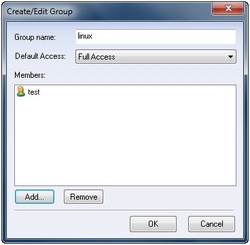
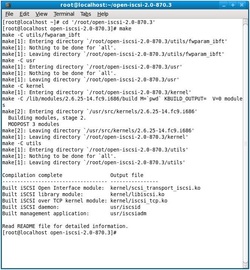
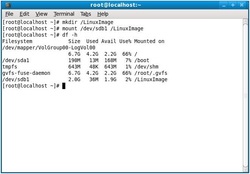

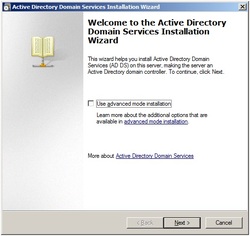

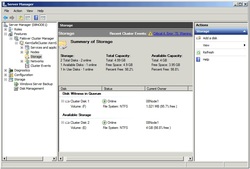

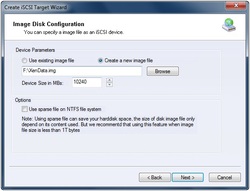

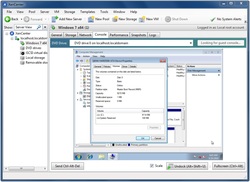

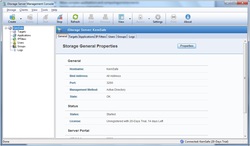
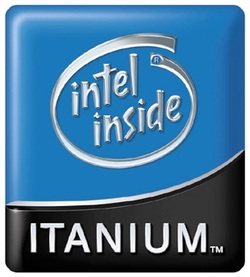

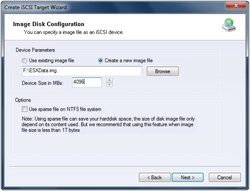
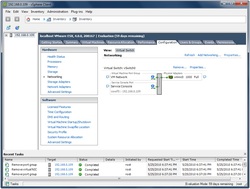



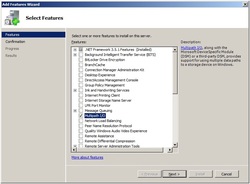


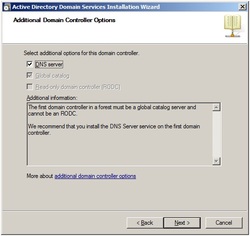
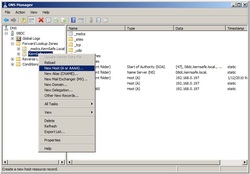
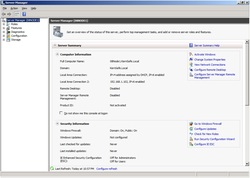

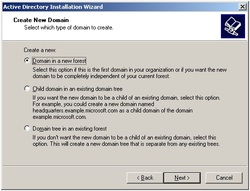
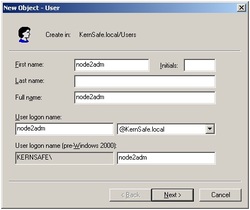
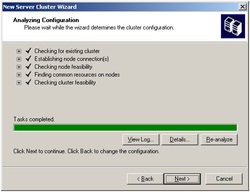

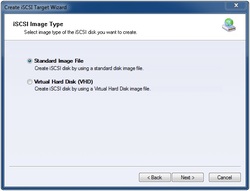
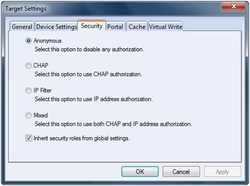
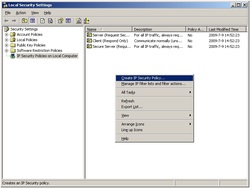
 RSS Feed
RSS Feed